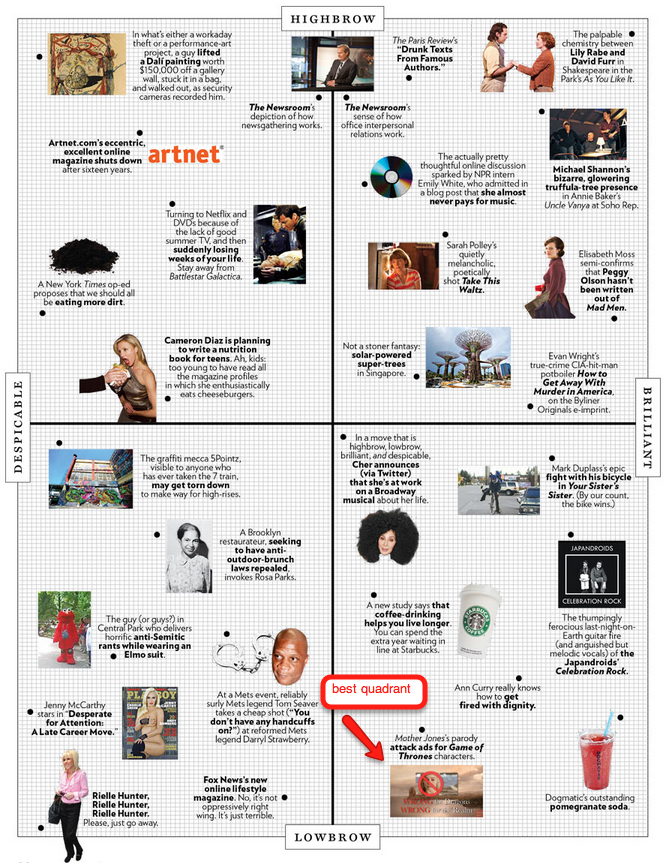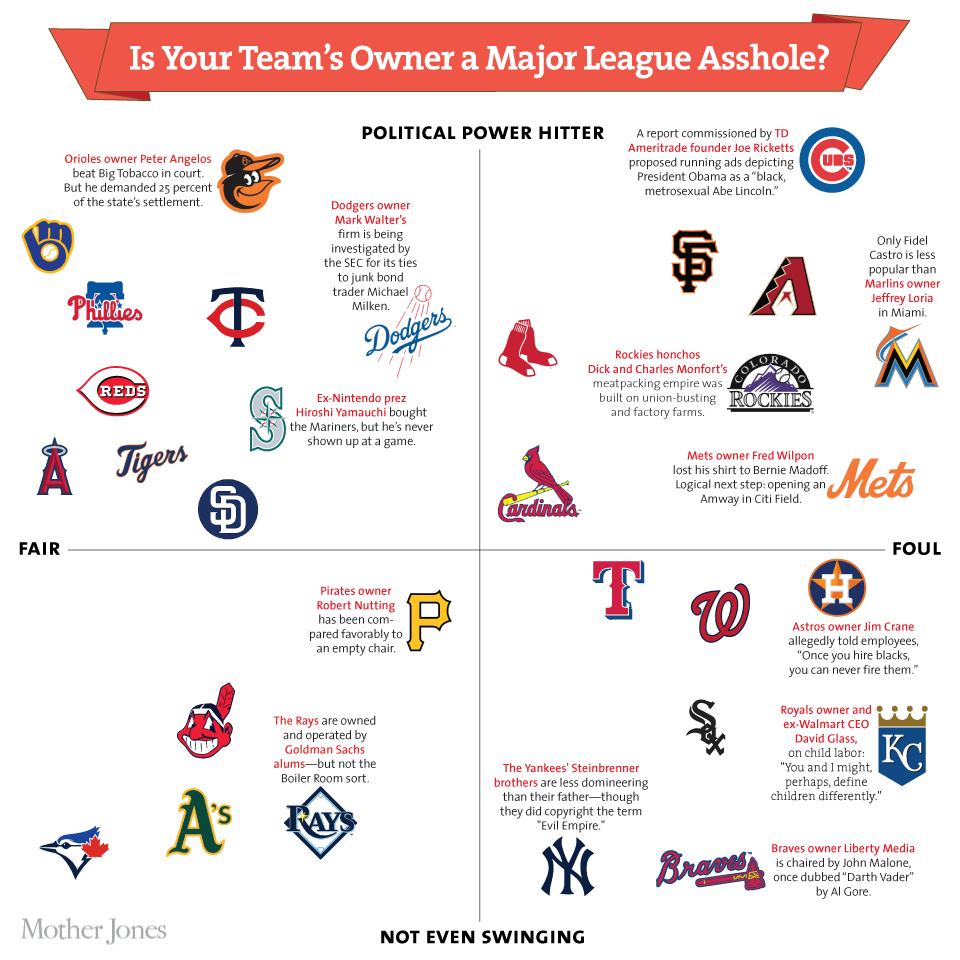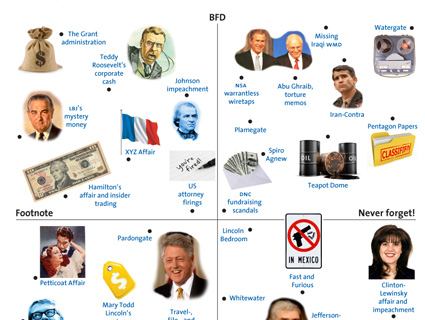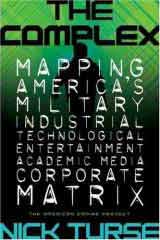While high school math teachers go to great lengths to explain why their class is useful, college math professors don’t even try. That because college-level math isn’t useful—to me, at least. Once math progressed from numbers to letters to Greek letters, I no longer had any hope of applying it to my everyday problems. So I was a little surprised when my college linear algebra class came in handy here at work.
As a fact-checker at Mother Jones, I get to be very precise and a bit too literal and sometimes annoying. That’s why, when we started plotting political scandals and Major League Baseball owners in the style of New York magazine’s Approval Matrix, I started feeling uncomfortable. Okay, I’m just going to come out and say it: This is not a matrix. It’s a Cartesian coordinate plane!
(P.S.: Here are those brilliant, lowbrow Game of Thrones attack ads it mentions.)
This is not a matrix either…
Nor is this…
(I helped produce this last graphic and actually wrote “matrix” into the slug, so I’m not coming off clean here.)
So, if you remember back to your own algebra class, matrices are an array of mathematical elements such as numbers, expression, or symbols. They look something like this:

Both our and New York’s “matrices” are actually Cartesian coordinate planes, which you may also remember from algebra. The x and y axes represent different values that increase as you move away from the center. Simple, really.
But don’t take it from me. Linear algebra is the reason I spent hours drawing matrices back in the day, so I decided to email my college professor. Once the youngest tenured professor at Harvard, Noam Elkies is a pretty brilliant mathematician. (Far too brilliant to be teaching the standard linear algebra class I took for my major.) He confirmed that, yes, this was certainly not a matrix you’d encounter in linear algebra, and could more accurately be called Cartesian. However, he added, “You can think of it as a mathematical matrix in the trivial bookkeeping sense that any spreadsheet is a matrix, even though hardly any of the mathematical structure of matrices is relevant. It hardly seems worth making a fuss over this.”
Fine, so maybe we can get by on a technicality. But I still wanted to know: Were the creators of the Approval Matrix aware of their mathematical imprecision? Had they ever considered more technically accurate names such as Approval Euclidean Plane Embedding? (One mathematician actually suggested this as an alternative.)
I put the question to Emily Nussbaum, the New Yorker TV critic who, as an editor at New York, helped create the Approval Matrix. Nussbaum had this to say in response: “I consider it a multi-faceted, prismatic, 5-Dimensional environment with a hidden wormhole, impossible to fully portray on paper, so ‘matrix’ seemed to work as shorthand.”
I haven’t fact-checked that, but it sounds about right to me.














